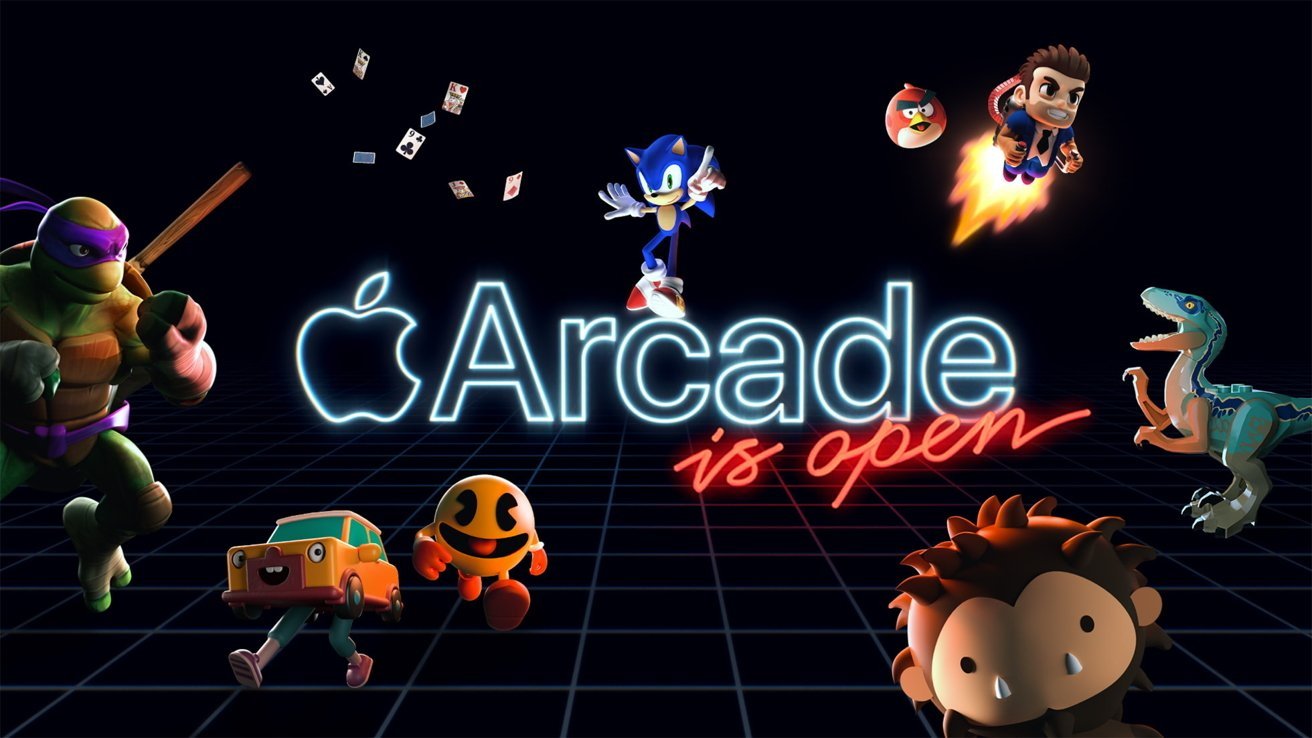Four years after launch, Apple Arcade is here to stay and will only get more powerful
Over four years after its debut, Apple Arcade has beaten the expectations of critics, and Apple Arcade chief Alex Rofman believes Apple's strategy for the service will continue to do so for a while longer.

Apple Arcade
Apple Arcade is soon to hit its fifth anniversary. It started off on shaky footing with naysayers believing it wouldn't survive for long.
Like it or not, it has become a fantastic value for gamers on Apple platforms. It's an even better one when combined with an Apple One subscription, and shared across and entire family's devices.
Years later, the service is continuing to see success for Apple and developers, with little sign of it slowing down. And, it's a key source of Apple Vision Pro-compatible titles.
In an interview with Digital Trends, Apple Arcade Senior Director Alex Rofman offered that the service was introduced at a time when premium games "didn't really have a place on mobile anymore" due to the increase of free-to-play gaming. "We really wanted to make sure those games existed for customers because there are plenty of people of all ages who feel like free-to-play isn't right for them," he explains.
Consumers weren't entirely keen to pay money for high-priced mobile games, especially when there were free-to-play titles available that may have sacrificed privacy and forced ad views that were still fun and cheap. At least, this is true for most players and not the occasional high-spending news story.
Apple wanted to remove some of the strain of developing an ethical business model from developers.
"We sought out developers from around the world. The charter to them was bring us an incredible game.' Don't worry about the business model,"Rofman said. "We're mitigating risk for you with the business model of Arcade. You just focus on making something wonderful for customers."
He believes that the continued relationship with some of the original launch partners is down to how Apple handles the distribution elements on behalf of older traditional studios who may have trouble dealing with free-to-play games.
"I think they welcome the opportunity to just bring a great game, without regard for the business model, to many millions of people," Rofman said.
Courting legends
While Apple has faced some criticism for its not exactly easy communications with some developers, Rofman insists that it is trying to be proactive when it deals with pitches from developers. This includes dealings with veteran developers.
"With Sakaguchi and Suzuki-san, they're both legendary game makers," he states, referring to Hironobu Sakaguchi and Yu Suzuki, who made the games Fantasian and "Air Twister" for Apple Arcade. "Neither of them grew up in the free-to-play age. They make premium experiences."
"We felt like they would be perfect people to work with and be a part of Arcade because those kinds of games might not exist on mobile were it not for our services." Rofman continued.
As for how this approach is working, Rofman doesn't offer specific figures, but insists "every critical metric for the service hit record highs in 2023," including 65 new games and over 400 content updates.
For what kind of games Apple Arcade is looking for, Rofman says Apple wants games that are easy to learn but hard to master, though it also seeks out inclusive titles as well. For example, Hello Kitty: Island Adventure is the most popular game on Apple Arcade so far.
So popular, in fact, that the titular character will make an appearance at Apple Union Square on Wednesday, March 20.
Shift in Strategy
Apple Arcade started to shift strategy towards high-engagement games and started canceling contracts in 2020. Then, and now, it wasn't clear if there was a full shift, or if Apple was seeing the future on a market trend -- or Apple Vision Pro.
In the interview, Rofman prefers to say the "engagement" term isn't quite what Apple is looking for.
"We're always looking to evolve the service based on what's resonating best with customers," Rofman responds. "There will always be a place for finite games on Arcade -- games that might only have an hour-and-a-half or three to five hours of gameplay. But the reality is that a lot of people's behavior on mobile is multiple times a day for just a few minutes. It wasn't so much driven by engagement, but rather meeting players' needs."
On mobile devices, that means games that are highly replayable and easy to play in short sessions. The same concept needs to apply to Apple Vision Pro as well.
And then, there's the issue of intellectual property. Exclusivity is a tricky topic, both from a business perspective, and a player one.
While tied into Apple Arcade, developers aren't leaving their IP rights on the table, Rofman insists. "The developer is always free to take it to the App Store, Steam, Switch or to console."
"We would love to see games that leave Arcade go to the App Store," Rofman added. "But the reality is that games that have been around for several many years, the studio might not want to have a team assigned to them or continue to support those games. They want to put the team onto something new."
Apple Arcade is also being used as a way for Apple to promote its Apple Vision Pro, by introducing gaming experiences to work with the headset. A number of Apple Arcade developers are creating updates and new games that take advantage of the spatial elements.
"There was a method to our madness!" insists Rofman about the initial wave of releases. "With the games we chose for the launch, we wanted to show off different aspects of the platform to help set a high bar for the broader developer community to embrace."
Read on AppleInsider

Comments
Apple Arcade 2024: "Seriously, so many great games…like Sneaky Sasquatch."